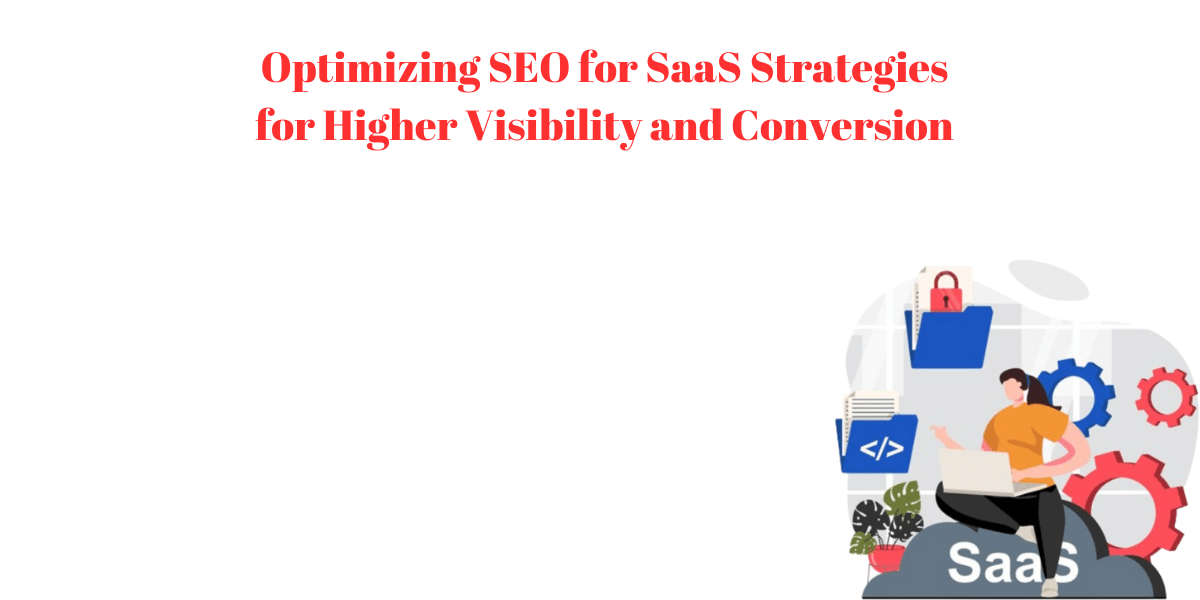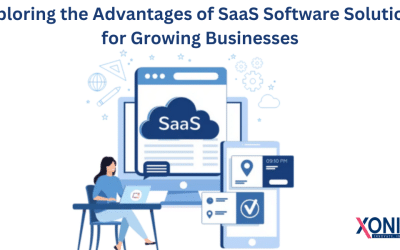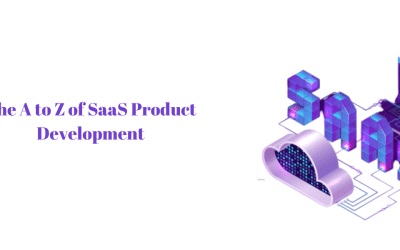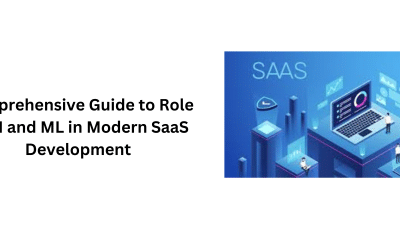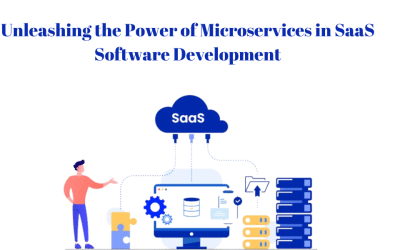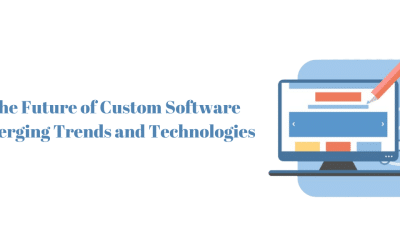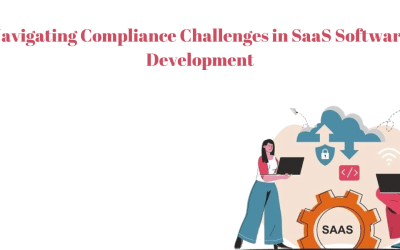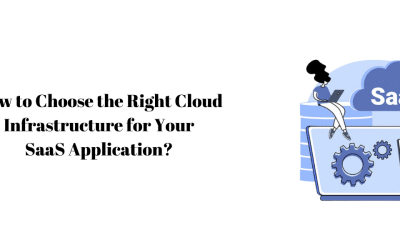In the ever-evolving landscape of online business, optimizing SEO for SaaS providers aiming to enhance visibility and drive conversions. This dynamic and competitive digital environment demands a nuanced approach to SEO, tailored to the unique characteristics of SaaS platforms. This comprehensive guide delves into the intricacies of SaaS SEO, offering actionable insights to elevate your online presence and increase conversion rates. From fundamental principles such as keyword research and meta tag optimization to advanced techniques like international SEO and leveraging user reviews, each aspect is explored to empower SaaS software companies in maximizing their online impact.
As we navigate through the following subheadings, discover proven strategies that not only boost visibility on search engines but also foster a user-friendly experience, ultimately propelling your SaaS enterprise towards sustainable growth and success in the digital realm.
Key Components of SEO in the SaaS Industry
The SaaS industry’s success hinges significantly on a well-orchestrated and effective Search Engine Optimization (SEO) strategy. Understanding the key components of SEO within the SaaS realm is fundamental to establishing and maintaining a strong online presence. Firstly, comprehensive keyword research tailored to the unique services or products offered is indispensable. This process involves identifying and targeting keywords relevant to the SaaS platform, ensuring alignment with user search queries.
Equally crucial is the optimization of meta titles and descriptions. Crafting compelling and concise meta tags not only aids search engines in understanding the content but also entices users to click through. Moreover, the creation of SEO-friendly content, rich in relevant keywords and valuable information, establishes a SaaS platform as an authoritative source in its niche. The importance of mobile optimization cannot be overstated, given the prevalence of mobile users. Ensuring that the SaaS website is responsive and provides an optimal user experience across various devices is imperative for SEO success.
Link building stands as another pivotal component, with high-quality backlinks enhancing a SaaS software development platform’s credibility in the eyes of search engines. Social media presence, too, plays a role, as search algorithms increasingly consider social signals in determining relevance and popularity. Balancing these components harmoniously, SaaS companies can elevate their SEO game, leading to increased visibility, enhanced user engagement, and ultimately, improved conversion rates in the competitive digital landscape.
The Importance of Keyword Research for SaaS Websites
Keyword research stands as a cornerstone in the realm of Search Engine Optimization (SEO) for Software as a Service (SaaS) websites, playing a pivotal role in determining their online visibility and user engagement. In the dynamic landscape of the internet, users rely on search engines to discover and access SaaS solutions. Thorough keyword research involves identifying and targeting specific terms and phrases that potential customers might use when searching for products or services offered by a SaaS platform.
For SaaS websites, the importance of precision in keyword selection cannot be overstated. Understanding the nuances of the industry, including the unique features and functionalities of the software, allows for the identification of keywords that resonate with the target audience. Long-tail keywords, in particular, contribute to a more refined and targeted approach, capturing users with specific needs or preferences.
Strategically incorporating these keywords into various elements of the website, such as meta titles, descriptions, headers, and naturally within content, helps search engines comprehend the relevance of the SaaS offering to user queries. This alignment significantly enhances the website’s chances of ranking higher in search engine results, making it more visible to potential customers.
Moreover, staying abreast of evolving industry trends and user behavior ensures that the chosen keywords remain relevant over time. As SaaS development businesses compete for attention in a crowded digital landscape, effective keyword research not only improves search engine rankings but also establishes a strong foundation for comprehensive SEO strategies that drive organic traffic and contribute to sustained online success.
Crafting Compelling Meta Titles and Descriptions
Crafting compelling meta titles and descriptions is an essential facet of Search Engine Optimization (SEO) for any online presence, including SaaS websites. Meta titles and descriptions serve as the first interaction users have with a webpage in search engine results, making them a critical factor in influencing click-through rates and overall site visibility.
A well-crafted meta title encapsulates the essence of the webpage concisely, incorporating strategic keywords that align with user search queries. It should be compelling, clear, and encourage users to delve deeper into the content. Striking the right balance between relevance and click-worthy appeal is vital for attracting potential customers.
Equally important are meta descriptions, providing a brief summary of the page’s content. While not a direct ranking factor, a persuasive meta description entices users to click on the link. It should offer a glimpse into the value proposition of the SaaS offering, addressing user needs and positioning the solution as a fitting answer to their queries. Including a call-to-action within the meta description can further encourage user engagement.
In the competitive SaaS landscape, where differentiation is key, meta titles and descriptions become powerful tools for conveying a unique selling proposition. The consistent optimization of these elements across the website enhances not only click-through rates but also the overall SEO performance, contributing to improved visibility and, ultimately, higher conversion rates for SaaS platforms.
Leveraging Long-Tail Keywords for SaaS Optimization
Leveraging long-tail keywords is a strategic imperative for optimizing Software as a Service (SaaS) websites, offering a nuanced approach to Search Engine Optimization (SEO) that goes beyond generic terms. Long-tail keywords consist of longer and more specific phrases, catering to users with precise queries and indicating a higher level of intent. In the SaaS industry, where products often address specific functionalities, leveraging long-tail keywords becomes instrumental in reaching a targeted audience.
Long-tail keywords not only facilitate a more refined connection between user searches and SaaS solutions but also contribute to a competitive advantage. These phrases often exhibit lower search volumes compared to generic terms, but they bring in more qualified and motivated leads. SaaS platforms can align their content with the specific pain points or needs of their target audience, enhancing the likelihood of conversion.
Moreover, the use of long-tail keywords aligns well with natural language and conversational search patterns, particularly with the rise of voice search. Users tend to articulate their queries in a more conversational manner, and long-tail keywords enable SaaS websites to address these queries effectively.
Crafting content around long-tail keywords involves creating in-depth and informative resources that thoroughly address specific user queries. This not only enhances the website’s relevance in search engine algorithms but also establishes the SaaS platform as an authority in its niche. By strategically incorporating long-tail keywords into various elements of the website, including meta tags, headers, and content, SaaS companies can optimize their online presence, increase organic traffic, and ultimately foster higher conversion rates.
Creating SEO-Friendly Content for SaaS Blogs and Pages
Creating SEO-friendly content for SaaS software blogs and pages is a fundamental aspect of enhancing online visibility and attracting a relevant audience. In the competitive digital landscape, where content is king, SaaS companies must prioritize producing high-quality, informative, and user-centric content that aligns with both their target audience’s needs and search engine algorithms.
First and foremost, understanding the target audience and their pain points is crucial for crafting content that resonates. The content should address common queries, provide solutions to challenges, and showcase the unique value proposition of the SaaS offering. This user-focused approach not only satisfies the audience but also signals relevance to search engines, contributing to improved rankings.
Strategic integration of relevant keywords within the content is paramount. This involves not only incorporating primary keywords but also leveraging semantic variations and long-tail keywords. Such a diversified keyword approach ensures that the content aligns with various user search queries, enhancing discoverability.
Additionally, creating content that is shareable and link-worthy can significantly boost SEO. Engaging infographics, insightful guides, and comprehensive whitepapers are examples of content formats that encourage sharing and may attract valuable backlinks. Search engines consider the quantity and quality of backlinks when assessing a website’s authority and relevance.
Regularly updating and refreshing existing content is another vital practice. Keeping content up-to-date demonstrates a commitment to accuracy and relevance, factors that search engines value. By consistently producing SEO-friendly content that addresses user needs and aligns with search engine algorithms, SaaS companies can establish themselves as authoritative sources, driving organic traffic and contributing to the overall success of their digital marketing efforts.
Mobile Optimization for SaaS Websites
Mobile optimization is a critical component in the overarching strategy for Software as a Service (SaaS) websites, considering the pervasive use of mobile devices in today’s digital landscape. As a significant portion of users access the internet and SaaS platforms through smartphones and tablets, ensuring a seamless and responsive experience on mobile devices is imperative for maintaining and improving search engine rankings, user engagement, and overall online success.
One key aspect of mobile optimization for SaaS website development is responsive design. The website layout should dynamically adjust to various screen sizes, providing an intuitive and visually pleasing experience regardless of the device used. This not only caters to user preferences but also aligns with Google’s mobile-first indexing, where the search engine primarily considers the mobile version of a site for indexing and ranking.
Page speed is another crucial factor in mobile optimization. Mobile users typically expect faster load times, and search engines prioritize websites that deliver a swift and efficient experience. Compressing images, minimizing code, and leveraging browser caching are strategies that contribute to faster page loading on mobile devices.
The optimization of content for mobile consumption is equally vital. Ensuring that text is easily readable, buttons are touch-friendly, and forms are simplified for smaller screens enhances the overall user experience. Mobile users often have distinct needs and behaviors, and tailoring content to meet these expectations can positively impact engagement and conversion rates.
In conclusion, SaaS websites must prioritize mobile optimization to meet the evolving demands of users and search engines alike. By implementing responsive design, optimizing page speed, and tailoring content for mobile consumption, SaaS companies can secure a competitive edge in the digital landscape and provide a seamless experience that resonates with their mobile audience.
Enhancing User Experience for SEO Success
Enhancing user experience is paramount for achieving SEO success in the dynamic digital landscape, and this principle holds particularly true for Software as a Service (SaaS) websites. Google and other search engines prioritize user satisfaction, and websites that provide a seamless, intuitive, and valuable experience tend to rank higher in search results.
Navigation is a key component of user experience. SaaS websites should ensure that their navigation is user-friendly, with clear menu structures and intuitive pathways. This not only assists visitors in finding information effortlessly but also signals to search engines that the website is well-organized and user-centric.
Page loading speed is a critical factor influencing user experience and SEO rankings. Slow-loading pages can result in higher bounce rates, negatively impacting both user satisfaction and search engine rankings. Optimizing images, leveraging browser caching, and employing content delivery networks (CDNs) are strategies to enhance page speed and improve overall website performance.
Responsive design is essential for catering to users across various devices, including smartphones and tablets. A website that adapts seamlessly to different screen sizes and resolutions not only provides a positive user experience but also aligns with Google’s mobile-first indexing, positively influencing search rankings.
Content readability and relevance also play a crucial role in user experience. Well-structured content, clear headings, and concise, informative language contribute to a positive user experience and keep visitors engaged. Regularly updating and refreshing content ensures its continued relevance and aligns with search engine preferences for current and valuable information.
In summary, by prioritizing user experience through intuitive navigation, fast-loading pages, responsive design, and compelling content, SaaS websites can create an environment that not only satisfies their audience but also earns favor with search engines, resulting in improved SEO performance and sustained online success.
SaaS Link Building Strategies for Higher Visibility
Implementing effective link building strategies is indispensable for enhancing the visibility of Software as a Service (SaaS) websites in the competitive online landscape. High-quality backlinks signal to search engines that a SaaS platform is a credible and authoritative source, consequently contributing to improved search rankings and increased organic traffic.
One pivotal approach to SaaS link building is creating and promoting valuable, shareable content. Producing informative blog posts, whitepapers, or industry reports establishes a SaaS platform as an expert in its field, encouraging other websites to link back as a reference. Guest posting on reputable industry blogs is another strategy, allowing SaaS companies to reach new audiences and secure authoritative backlinks.
Strategic partnerships within the SaaS software development ecosystem can also be leveraged for link building. Collaborating with complementary services or products and cross-promoting each other not only benefits users but can lead to reciprocal backlinks. Additionally, reaching out to industry influencers and thought leaders for collaboration or endorsements can result in valuable links from authoritative sources.
Creating link-worthy resources, such as tools, guides, or infographics, can attract natural backlinks from other websites seeking valuable content for their audiences. Distributing press releases about significant company developments or innovations can also generate media coverage and valuable backlinks.
Social media engagement and participation in relevant industry forums provide additional opportunities for SaaS link building. By sharing content, participating in discussions, and establishing an online presence, SaaS companies can attract attention and encourage backlinks from diverse sources.
In summary, SaaS link building strategies revolve around creating and promoting valuable content, building partnerships, engaging with influencers, and actively participating in online communities. By cultivating a diverse and high-quality backlink profile, SaaS websites can enhance their visibility, credibility, and ultimately, their success in the digital landscape.
The Role of Social Media in SaaS SEO
Social media plays a multifaceted and increasingly influential role in the realm of Software as a Service (SaaS) Search Engine Optimization (SEO), serving as both a direct and indirect contributor to a SaaS platform’s online visibility and success. One primary aspect involves the generation of social signals, such as likes, shares, and comments, which search engines consider as indicators of a website’s relevance and popularity. Active engagement and positive interactions on social media platforms can positively influence search engine rankings, amplifying the overall SEO impact for SaaS websites.
Social media platforms serve as valuable channels for content distribution, allowing SaaS development companies to share blog posts, infographics, videos, and other relevant content directly with their audience. Content that resonates on social media has the potential to attract backlinks, indirectly benefiting SEO efforts by increasing a website’s authority and credibility.
Moreover, social media profiles often rank high in search engine results, contributing to an extended online presence for SaaS brands. Maintaining consistent and optimized social media profiles, including a link to the SaaS website, enhances brand visibility and encourages users to explore further, positively impacting overall SEO performance.
Additionally, social media provides a platform for building relationships with influencers, industry experts, and potential customers. Collaborations and endorsements from these sources can lead to valuable backlinks and increased visibility within the SaaS community.
In conclusion, the role of social media in SaaS SEO extends beyond mere brand promotion. Active engagement, content distribution, and relationship-building efforts on social platforms contribute significantly to a SaaS website’s overall visibility, authority, and success in the competitive digital landscape.
Local SEO Tactics for SaaS Companies
Local SEO tactics are instrumental for SaaS companies looking to establish a strong regional presence and connect with a targeted audience. While SaaS businesses may operate in a digital realm, employing local SEO strategies can enhance visibility, trust, and relevance within specific geographic markets.
One key aspect of local SEO for SaaS involves optimizing Google My Business (GMB) profiles. Verifying and completing the GMB listing with accurate business information, including address, phone number, and operating hours, ensures that the SaaS company appears prominently in local search results. Encouraging customers to leave reviews on the GMB profile further enhances credibility and influences local rankings.
Localized keyword optimization is crucial for SaaS companies targeting specific regions. Incorporating location-based keywords in website content, meta tags, and headings helps search engines understand the geographical relevance of the SaaS offering, improving the chances of appearing in local search results.
Creating location-specific landing pages is another effective tactic. These pages can highlight regional aspects of the SaaS product or service, cater to local search intent, and include testimonials or case studies from clients in the targeted area. This tailored approach demonstrates a commitment to the local market, increasing the likelihood of conversion.
Consistent NAP (Name, Address, Phone number) information across all online platforms, directories, and citations is essential for local SEO. This ensures that search engines and users receive accurate and consistent information, reinforcing the SaaS company’s local relevance.
In summary, implementing local SEO tactics for SaaS companies involves optimizing Google My Business profiles, incorporating localized keywords, creating location-specific landing pages, and maintaining consistent NAP information. These strategies collectively contribute to higher visibility, increased trust, and improved performance in the local markets where SaaS companies seek to establish a foothold.
Implementing Schema Markup for SaaS Websites
Implementing schema markup is a strategic and often underutilized tactic for enhancing the visibility and understandability of SaaS websites in search engine results. Schema markup involves adding structured data to HTML code, providing search engines with additional context about the content on a webpage. For SaaS companies, this markup can significantly improve the way search engines interpret and display information, ultimately contributing to a more informative and visually appealing presentation in search results.
One prominent application of schema markup for SaaS websites is the inclusion of product schema. This enables search engines to recognize and display essential details about the SaaS product directly on the search results page, such as features, pricing, and user reviews. This rich snippet of information not only enhances the visibility of the SaaS offering but also provides users with valuable insights at a glance, potentially increasing click-through rates.
Similarly, incorporating schema markup for organization information, such as company name, logo, and social media profiles, can contribute to the creation of a knowledge graph in search results. This enhances the brand’s online presence and credibility, fostering trust among potential users.
Event schema can be employed for showcasing webinars, product launches, or industry events hosted by the SaaS company. This provides an additional layer of information in search results, attracting the attention of users interested in upcoming events related to the SaaS platform.
In summary, implementing schema markup for SaaS app development, particularly product schema, organization schema, and event schema, offers a powerful tool for optimizing how search engines understand and present information. By enhancing the visibility and credibility of SaaS offerings in search results, schema markup contributes to a more impactful and user-friendly online presence.
Optimizing SaaS Landing Pages for Conversion
Optimizing Software as a Service (SaaS) landing pages for conversion is a crucial aspect of digital marketing strategies, aiming to turn visitors into engaged users or customers. A well-designed and strategically crafted landing page can significantly impact the user journey and boost the overall conversion rate for a SaaS platform.
Firstly, clarity and relevance in content are paramount. The landing page should clearly communicate the unique value proposition of the SaaS offering, addressing user pain points and emphasizing key benefits. Concise and compelling copy, accompanied by visually appealing elements, guides visitors through the page with a focus on conversion goals.
Strategic placement of calls-to-action (CTAs) is instrumental in guiding user behavior. CTAs should be prominently displayed, using persuasive language and vibrant design to encourage visitors to take specific actions, such as signing up for a trial, downloading a resource, or making a purchase. The language should align with the stage of the buyer’s journey, providing the right level of information to nurture the lead towards conversion.
Form optimization is another critical element. Minimizing the number of form fields while collecting essential information streamlines the user experience and reduces friction. Implementing trust signals, such as security badges, testimonials, or recognizable client logos, instills confidence in the visitor, addressing potential concerns and facilitating conversion.
Furthermore, A/B testing various elements, including headlines, images, and CTAs, allows for data-driven optimization. Analyzing user behavior and iteratively refining the landing page based on performance metrics ensures continuous improvement in conversion rates.
In conclusion, optimizing SaaS landing pages involves creating compelling content, strategically placing CTAs, optimizing forms, and conducting A/B testing. A well-optimized landing page not only attracts visitors but also guides them seamlessly towards conversion, maximizing the impact of digital marketing efforts for SaaS platforms.
A/B Testing and SEO: Improving SaaS Website Performance
A/B testing, when integrated strategically with Search Engine Optimization (SEO) efforts, plays a pivotal role in enhancing the performance of Software as a Service (SaaS) websites. A/B testing involves comparing two versions of a webpage (A and B) to determine which one performs better in terms of user engagement, conversion rates, and other relevant metrics. This iterative testing process can be applied to various elements of a SaaS website to refine its design, content, and user experience.
In the context of SEO, A/B testing allows SaaS companies to experiment with different on-page elements and assess their impact on search engine rankings and user interactions. For instance, testing variations of meta titles, meta descriptions, and headline tags can help identify the most effective language and content structure for improved click-through rates from search engine results pages.
Page elements such as calls-to-action (CTAs), forms, and overall layout can also be subjected to A/B testing. Understanding which design or placement leads to higher conversion rates not only benefits user experience but can positively impact the SEO performance of a SaaS website. Google’s algorithms consider user engagement metrics, and a website that successfully converts visitors into leads or customers is likely to be viewed more favorably in search rankings.
Continuous A/B testing allows SaaS companies to adapt to changing user preferences, search engine algorithms, and industry trends. By embracing a data-driven approach, SaaS websites can identify and implement the most effective strategies for both SEO and user engagement, ultimately improving overall website performance and competitiveness in the online landscape.
The Impact of Site Speed on SaaS SEO
The impact of site speed on SaaS SEO is profound, influencing both user experience and search engine rankings. Google, in particular, considers page loading speed as a crucial factor in determining search rankings, recognizing the significance of delivering a fast and efficient user experience. SaaS companies aiming to optimize their websites for SEO cannot overlook the importance of site speed in this competitive digital landscape.
From a user experience perspective, fast-loading pages contribute to a positive impression and enhanced satisfaction. Visitors are more likely to engage with content, navigate through different sections, and convert into leads or customers when they experience minimal wait times. This positive user engagement is not only valuable in itself but is also recognized by search engines, contributing to improved rankings.
Search engines prioritize delivering the best possible results to users, and page speed is a key metric in evaluating website quality. Slow-loading pages can result in higher bounce rates, indicating to search engines that users are dissatisfied with the experience. This dissatisfaction can lead to lower rankings, negatively impacting the overall SEO performance of a SaaS website.
Moreover, as the significance of mobile devices in internet usage continues to rise, mobile page speed has become a crucial aspect of SEO. Google’s mobile-first indexing considers the performance of the mobile version of a site, emphasizing the importance of optimizing site speed for mobile users.
In summary, the impact of site speed on SaaS SEO is twofold – it directly influences user experience and engagement while also playing a pivotal role in search engine rankings. SaaS software companies should prioritize site speed optimization as an integral part of their broader SEO strategy to ensure a competitive and user-friendly online presence.
Voice Search Optimization for SaaS Platforms
Voice search optimization has become a critical consideration for SaaS platforms seeking to adapt to changing user behavior and technology trends. With the proliferation of voice-activated devices and virtual assistants, users are increasingly relying on spoken queries, making it imperative for SaaS companies to optimize their platforms for voice search.
One key aspect of voice search optimization for SaaS platforms involves understanding and leveraging natural language patterns. Users tend to phrase voice queries conversationally, and optimizing content for more natural and colloquial language helps align the platform with user expectations. This includes incorporating long-tail keywords and anticipating questions users might pose in a spoken format.
Featured snippets play a pivotal role in voice search results, as virtual assistants often pull information from these concise and informative snippets. SaaS companies should structure their content to be snippet-friendly, providing clear and direct answers to common user queries. This not only enhances visibility in voice search results but also positions the platform as an authoritative source in its niche.
Ensuring local relevance is another crucial consideration in voice search optimization. Many voice searches have a local intent, such as finding nearby services or businesses. SaaS platforms should optimize their content, including business information and location-based keywords, to cater to these location-specific voice queries.
As the adoption of voice search continues to rise, SaaS companies that proactively optimize their platforms for voice queries stand to gain a competitive edge. By understanding natural language patterns, optimizing for featured snippets, and ensuring local relevance, SaaS platforms can enhance their visibility and accessibility in the evolving landscape of voice search.
Competitor Analysis in SaaS SEO Strategies
Competitor analysis is a crucial component of robust SaaS SEO strategies, providing valuable insights to inform and refine a SaaS platform’s approach in the highly competitive digital landscape. By understanding the strengths and weaknesses of competitors, SaaS companies can identify opportunities, mitigate challenges, and ultimately optimize their SEO efforts.
One key aspect of competitor analysis is evaluating keyword strategies. Identifying the keywords for which competitors are ranking well allows SaaS platforms to refine and expand their own keyword targeting. This insight aids in uncovering potential gaps in content and opportunities to capture a larger share of the target audience through strategic keyword optimization.
Analyzing backlink profiles is equally important. Understanding the quality and quantity of backlinks that competitors have acquired provides valuable benchmarks for SaaS platforms. By identifying link-building opportunities and developing a strategy to acquire authoritative backlinks, SaaS companies can enhance their website’s credibility and improve search engine rankings.
Examining content strategies employed by competitors helps SaaS platforms refine their own content creation and distribution plans. Identifying content gaps or areas where competitors excel allows for strategic differentiation and the development of unique, valuable content that resonates with the target audience.
Moreover, competitor analysis in SaaS SEO strategies extends to monitoring and benchmarking performance metrics, such as organic traffic, conversion rates, and user engagement. Regularly assessing these metrics enables SaaS companies to adapt their strategies dynamically, staying ahead in the competitive landscape and continually optimizing their SEO efforts for sustained success. Overall, competitor analysis is an indispensable tool for SaaS platforms to refine their SEO strategies, gain a competitive edge, and achieve long-term success in the digital marketplace.
The Power of Customer Reviews for SaaS SEO
The power of customer reviews holds significant influence in shaping the Search Engine Optimization (SEO) strategies of Software as a Service (SaaS) companies. Reviews not only serve as a testament to the quality and value of a SaaS platform but also play a crucial role in impacting its online visibility and search engine rankings.
Customer reviews contribute to the overall credibility and authority of a SaaS website. Search engines, including Google, consider user-generated content such as reviews as an indication of a platform’s trustworthiness and relevance. Positive reviews act as valuable endorsements, signaling to search engines that the SaaS solution is well-regarded within its user community.
The quantity and frequency of customer reviews also play a role in SEO. Search engines often prioritize websites that consistently receive fresh and authentic content, and regularly updated reviews contribute to this dynamic content ecosystem. Encouraging users to leave reviews not only enhances the credibility of the SaaS platform but also boosts its chances of being prominently featured in search results.
Furthermore, customer reviews can influence click-through rates from search engine results pages (SERPs). Positive reviews displayed in rich snippets or star ratings provide additional information to users, making the SaaS platform more appealing and increasing the likelihood of attracting clicks.
In summary, the power of customer reviews in SaaS SEO lies in their ability to enhance credibility, influence search engine rankings, and impact user behavior. SaaS companies that actively manage and leverage customer reviews can create a positive feedback loop, improving their online reputation and ultimately contributing to higher visibility and success in the competitive digital landscape.
SaaS and Video Content: SEO Best Practices
In the realm of Software as a Service (SaaS), incorporating video content into SEO strategies has emerged as a potent tool for engaging audiences and boosting search engine visibility. Implementing best practices for video content ensures that SaaS companies not only convey their messages effectively but also enhance their overall SEO performance.
Firstly, optimizing video titles, descriptions, and tags is crucial for search engine recognition. Using relevant keywords in these elements allows search engines to understand the content, increasing the likelihood of video visibility in search results. Creating compelling and informative thumbnails further encourages clicks, contributing to improved SEO metrics.
Hosting videos on platforms such as YouTube and embedding them on the SaaS website aids in SEO efforts. YouTube, being the second-largest search engine, provides an additional avenue for discovery, while embedded videos contribute to on-page engagement and dwell time, factors that influence search rankings.
Transcribing video content and providing captions not only improves accessibility but also enhances SEO. Search engines can crawl and index text, making the content more comprehensible and relevant for a broader audience. Additionally, transcripts serve as an opportunity to incorporate targeted keywords, reinforcing the video’s SEO impact.
Promoting video content across various channels, including social media and email marketing, amplifies its reach and encourages backlinks. Increased shares, likes, and comments indicate to search engines that the content is valuable and relevant, positively influencing SEO rankings.
In conclusion, SaaS companies can leverage video content to bolster their SEO strategies by optimizing titles and descriptions, utilizing platforms like YouTube, transcribing content, and promoting videos across multiple channels. Integrating these best practices not only enhances the visibility of SaaS video content but also contributes to a more comprehensive and effective SEO strategy.
Aligning SaaS SEO with Content Marketing Strategies
Aligning SaaS SEO with content marketing strategies is essential for creating a cohesive and effective digital presence. By seamlessly integrating SEO and content marketing efforts, SaaS companies can maximize their online visibility, engage target audiences, and drive conversions.
Firstly, conducting thorough keyword research and incorporating these keywords strategically into content is fundamental. Content should not only align with user intent but also address the specific queries and pain points of the target audience. This harmonious integration ensures that content is not only informative and engaging but also optimized for search engine algorithms, enhancing its discoverability.
Creating high-quality, shareable content is paramount. Valuable content attracts links naturally, contributing to the development of a robust backlink profile that positively impacts SEO. Whether it’s blog posts, whitepapers, or videos, content marketing strategies should aim to provide genuine value to the audience while aligning with the targeted keywords and SEO objectives.
Consistency in messaging and branding across content and SEO efforts is crucial for reinforcing the SaaS company’s identity. This consistency builds trust and recognition, factors that contribute to user engagement and satisfaction, subsequently influencing SEO performance.
Regularly updating and refreshing content is a shared best practice. Search engines favor fresh and relevant content, and aligning content marketing strategies with SEO involves keeping content up-to-date to maintain its relevance and impact on search rankings.
In summary, aligning SaaS SEO with content marketing strategies involves seamlessly integrating keyword optimization, creating valuable and shareable content, ensuring consistency in messaging, and prioritizing regular content updates. This synergy not only enhances the overall digital marketing strategy but also contributes to sustained success in the competitive landscape of the SaaS industry.
Utilizing Google My Business for SaaS Local SEO
Leveraging Google My Business (GMB) is a powerful and often underutilized strategy for enhancing local SEO for Software as a Service (SaaS) companies. GMB provides a platform for SaaS businesses to manage and optimize their online presence, particularly in local searches, and effectively connect with their target audience.
Firstly, ensuring accurate and comprehensive business information on the GMB profile is fundamental. This includes the SaaS company’s name, address, phone number, operating hours, and a succinct business description. This information not only aids users in understanding the essential details about the company but also assists search engines in accurately indexing and presenting the information in local search results.
Encouraging and responding to customer reviews on GMB is another crucial aspect of local SEO. Positive reviews enhance the credibility of the SaaS company, influencing potential customers, while responding to reviews demonstrates active engagement and customer-centricity. Both factors contribute to improved search engine rankings and increased trust among the local audience.
Utilizing GMB’s features, such as posting updates, adding photos, and highlighting special offers or events, further enriches the profile and increases visibility in local searches. Regularly updating the GMB profile signals to search engines that the information is current and relevant, positively impacting local SEO rankings.
In conclusion, for SaaS companies looking to optimize their local SEO, effectively utilizing Google My Business is paramount. Ensuring accurate information, actively managing customer reviews, and utilizing GMB features contribute to a robust local online presence, ultimately enhancing visibility and engagement within the targeted geographic market.
SaaS SEO Analytics and Tracking Key Metrics
Implementing robust analytics and tracking key metrics is essential for optimizing Software as a Service (SaaS) SEO strategies. By leveraging analytics tools, SaaS companies can gain valuable insights into user behavior, website performance, and the effectiveness of SEO efforts.
One primary metric to track is organic traffic, which provides an overview of the number of visitors reaching the SaaS website through search engine results. Analyzing organic traffic trends over time helps assess the impact of SEO strategies on the website’s visibility and user acquisition.
Conversion rates from organic traffic are equally crucial. By monitoring how many visitors take desired actions, such as signing up for a trial or making a purchase, SaaS companies can gauge the effectiveness of their SEO in driving meaningful engagements and conversions.
Keyword performance is a key aspect of SaaS SEO analytics. Monitoring rankings for target keywords and assessing changes over time helps SaaS companies understand their competitive landscape and make informed adjustments to their SEO strategies.
Analyzing user engagement metrics, such as bounce rate, time on page, and pages per session, provides insights into the relevance and appeal of the content to visitors. High-quality, engaging content is a critical factor in retaining and converting organic traffic.
Backlink analysis is vital for understanding the link profile of the SaaS website. Monitoring the quantity, quality, and relevance of backlinks helps identify opportunities for improvement and ensures a healthy and authoritative online presence.
In conclusion, SaaS SEO analytics encompass tracking organic traffic, conversion rates, keyword performance, user engagement metrics, and backlink analysis. These key metrics provide a comprehensive understanding of the impact of SEO efforts, enabling SaaS companies to make informed decisions, refine strategies, and continually optimize their online presence for sustained success.
Adapting SEO Strategies for SaaS Product Updates
Adapting SEO strategies for Software as a Service (SaaS) product updates is crucial to effectively communicate changes, maintain search visibility, and ensure a seamless user experience. When introducing product updates, SaaS companies need to implement a strategic approach to leverage SEO for maximum impact.
Firstly, updating and optimizing on-page content is essential. Clearly communicate the benefits and features of the new product version on relevant landing pages, incorporating targeted keywords to align with user search intent. Ensuring that meta titles, descriptions, and headers reflect the latest information helps search engines understand and index the changes.
Utilizing structured data markup can enhance the visibility of product updates in search results. Schema markup can be employed to highlight specific details, such as version numbers, features, and release dates, providing search engines with valuable information for presenting enhanced snippets in results.
Managing redirects for pages affected by product updates is crucial to prevent broken links and maintain SEO equity. Properly redirecting outdated URLs to their updated counterparts ensures a seamless user experience and prevents potential negative impacts on search rankings.
Engaging in proactive communication through blog posts, press releases, and social media updates is vital. Announcing product updates not only informs existing users but also attracts new audiences. These announcements should be optimized for relevant keywords to maximize visibility in search results.
In conclusion, adapting SEO strategies for SaaS product updates involves optimizing on-page content, utilizing structured data markup, managing redirects, and communicating updates effectively. A well-executed SEO strategy aligns product updates with user search behavior, ensuring that SaaS companies capitalize on the opportunity to enhance visibility, attract users, and maintain a strong online presence.
International SEO for SaaS Companies Expanding Globally
Expanding globally requires Software as a Service (SaaS) companies to implement comprehensive international SEO strategies to effectively reach and engage diverse audiences. International SEO for SaaS involves addressing linguistic, cultural, and regional differences to optimize the online presence in each target market.
Firstly, thorough keyword research tailored to each target market is essential. Understanding how users in different regions search for SaaS solutions ensures that the content is not only linguistically accurate but also culturally relevant. Adapting keywords, meta tags, and content to reflect local language nuances enhances the discoverability of the SaaS platform in global search engines.
Implementing hreflang tags is a critical aspect of international SEO. These tags signal to search engines which version of the content is intended for specific regions or languages, preventing duplicate content issues and ensuring that users are directed to the most relevant and localized content.
Localizing website content and user interfaces is paramount for user experience and SEO success. Translating not only the text but also adapting images, currency, and other elements to suit regional preferences fosters a connection with the local audience and positively impacts search rankings.
Engaging in region-specific link-building efforts contributes to building authority in each target market. Acquiring high-quality backlinks from local sources reinforces the credibility of the SaaS platform within that region, influencing search engine algorithms.
In conclusion, successful international SEO for SaaS companies expanding globally involves meticulous keyword research, implementation of hreflang tags, content localization, and region-specific link-building. By tailoring the online presence to the unique characteristics of each target market, SaaS companies can maximize their visibility, relevance, and success in the global digital landscape.
Staying Updated with Search Engine Algorithm Changes in SaaS SEO
Staying updated with search engine algorithm changes is imperative for SaaS companies engaged in SEO efforts to maintain and improve their online visibility. Search engine algorithms, such as those of Google, are constantly evolving to provide users with the most relevant and high-quality search results. Failure to adapt to these changes can result in a decline in search rankings and visibility, negatively impacting the success of SaaS SEO strategies.
To effectively stay updated with search engine algorithm changes, SaaS companies must prioritize ongoing education and monitoring of industry news and updates. Subscribing to reputable SEO blogs, attending webinars, and participating in industry forums are valuable resources for staying informed about algorithm changes and their potential implications for SaaS SEO.
Regularly monitoring analytics and performance metrics is essential for identifying any fluctuations or trends in search engine rankings and organic traffic. SaaS companies should track key metrics such as organic traffic, keyword rankings, and conversion rates to assess the impact of algorithm updates on their SEO efforts.
Maintaining flexibility and agility in SEO strategies is crucial when adapting to search engine algorithm changes. SaaS companies should be prepared to adjust their keyword targeting, content optimization, and link-building strategies in response to algorithm updates to align with the evolving ranking factors and best practices.
Engaging with SEO professionals and consultants can provide valuable insights and guidance on navigating algorithm changes effectively. Collaborating with experts in the field ensures that SaaS companies are equipped with the knowledge and strategies needed to adapt and thrive in the ever-changing landscape of SEO. By staying proactive and informed about search engine algorithm changes, SaaS companies can optimize their SEO efforts to maintain and improve their online visibility and drive business growth.
The Key Takeaway
In conclusion, effective SEO strategies are indispensable for the sustained success of Software as a Service (SaaS) companies in the dynamic digital landscape. From optimizing on-page elements and leveraging content marketing to adapting to search engine algorithm changes and embracing international SEO practices, a holistic approach is vital.
The interplay between SEO and various facets of digital marketing, including social media, video content, and customer reviews, amplifies the impact of SaaS platforms. Staying attuned to user behavior, embracing evolving technologies like voice search, and prioritizing user experience contribute to a robust SEO foundation.
Furthermore, the synergy between SEO and analytics ensures data-driven decision-making, allowing SaaS companies to refine and optimize their strategies continuously. As SaaS companies navigate global expansion, localized SEO efforts become pivotal. By staying vigilant, adaptive, and aligned with best practices, SaaS companies can fortify their online presence, enhance visibility, and drive meaningful engagement with their target audiences across the globe.

